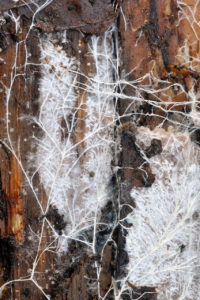
It was exciting to receive the recent newsletters of the Bendigo Field Naturalists Club, Castlemaine Field Naturalists Club and the Field Naturalists Club of Ballarat and see fungi featuring prominently on the first pages. Field Nats have, of course, always been keenly interested in fungi with fungus articles appearing in the Victorian Naturalist (FNCV) since its first issue in 1885, with Ferdinand von Mueller providing a “list of fungaceous species . . . giving the specific names of 235”.
The mycelial proliferation of interest in fungi goes further with fungal themes regularly emerging in art and literature. In his latest book, Underland, British nature writer Robert Macfarlane professes “Occasionally – once or twice in a lifetime if you are lucky – you encounter an idea so powerful in its implications that it unsettles the ground you walk on”. Macfarlane refers to his realisation of the significance of mycorrhizal symbioses. German forester, Peter Wohlleben popularised the notion of the “wood wide web” in his book The Hidden Life of Trees that draws on the ground-breaking research of forest ecologist Suzanne Simard. Once a less known idea among broader audiences, it seems a more mycelial way of thinking is gradually becoming more commonplace.
By Alison Pouliot

